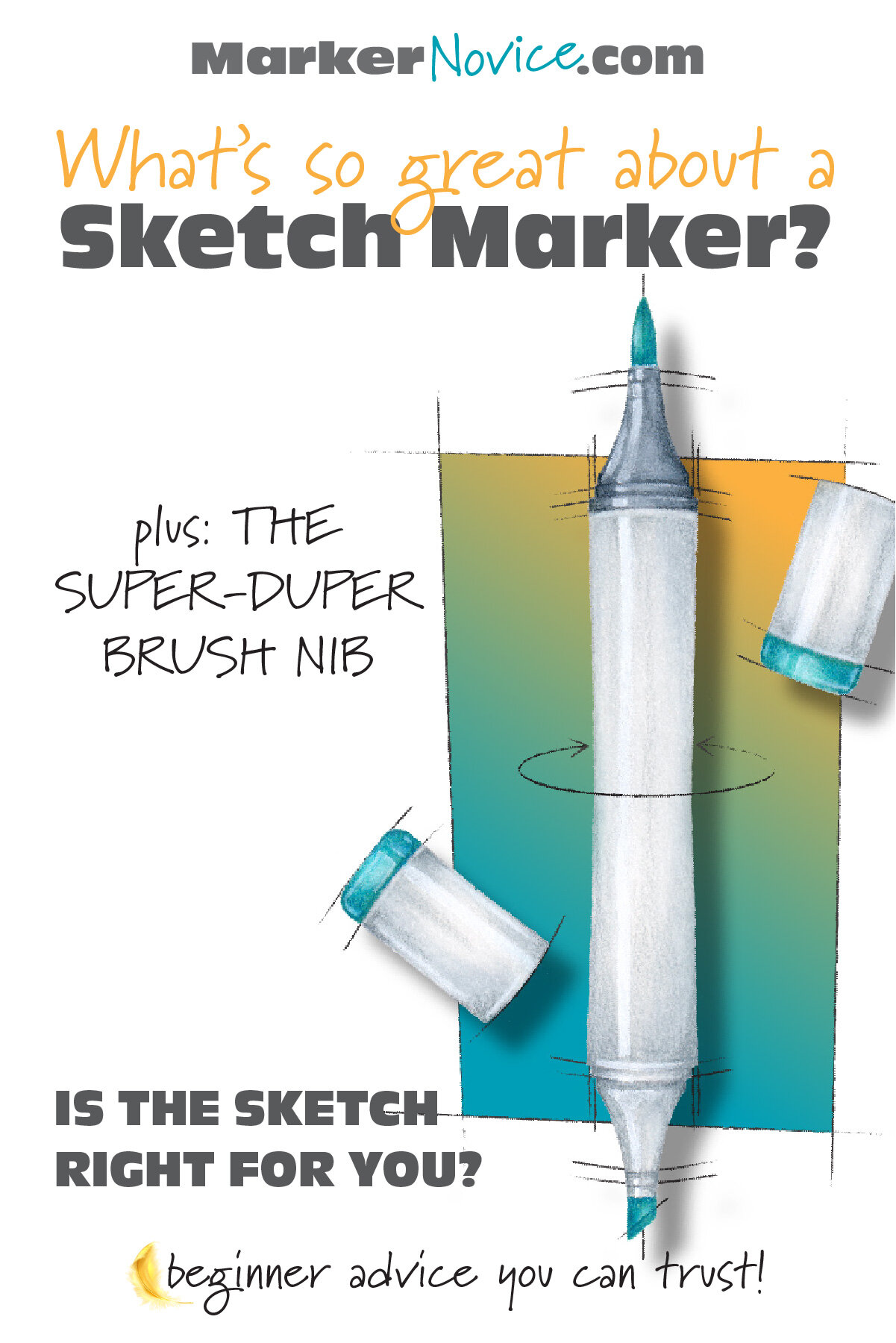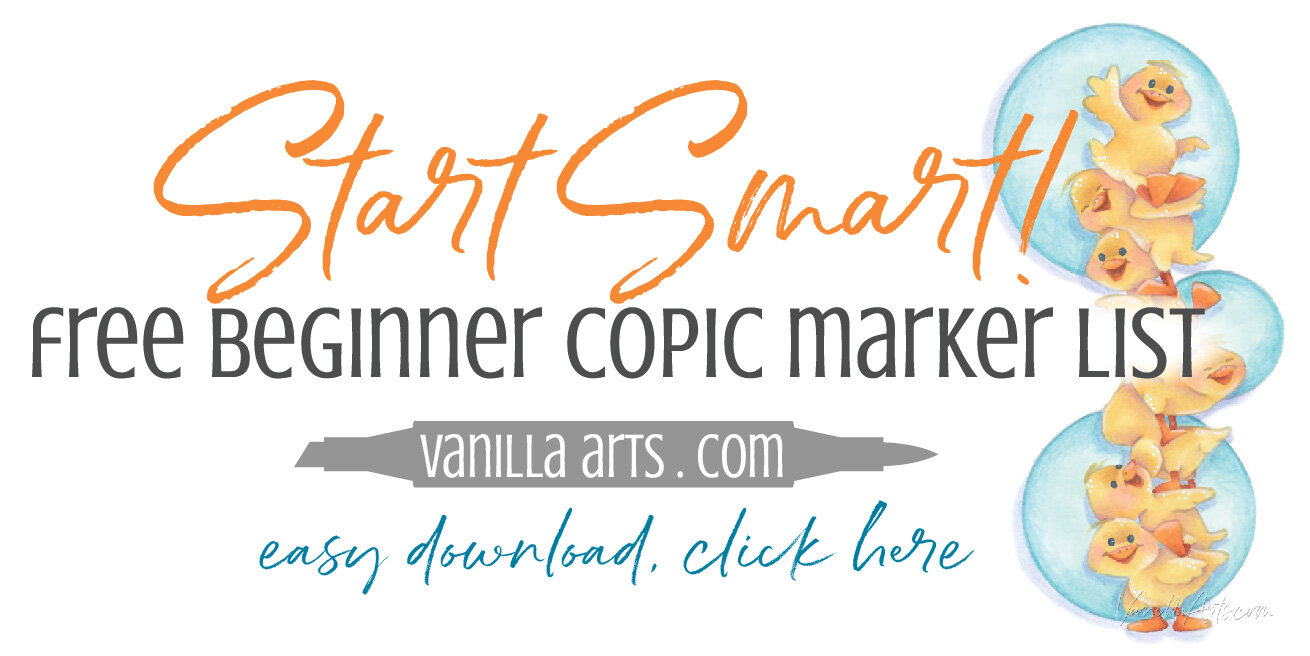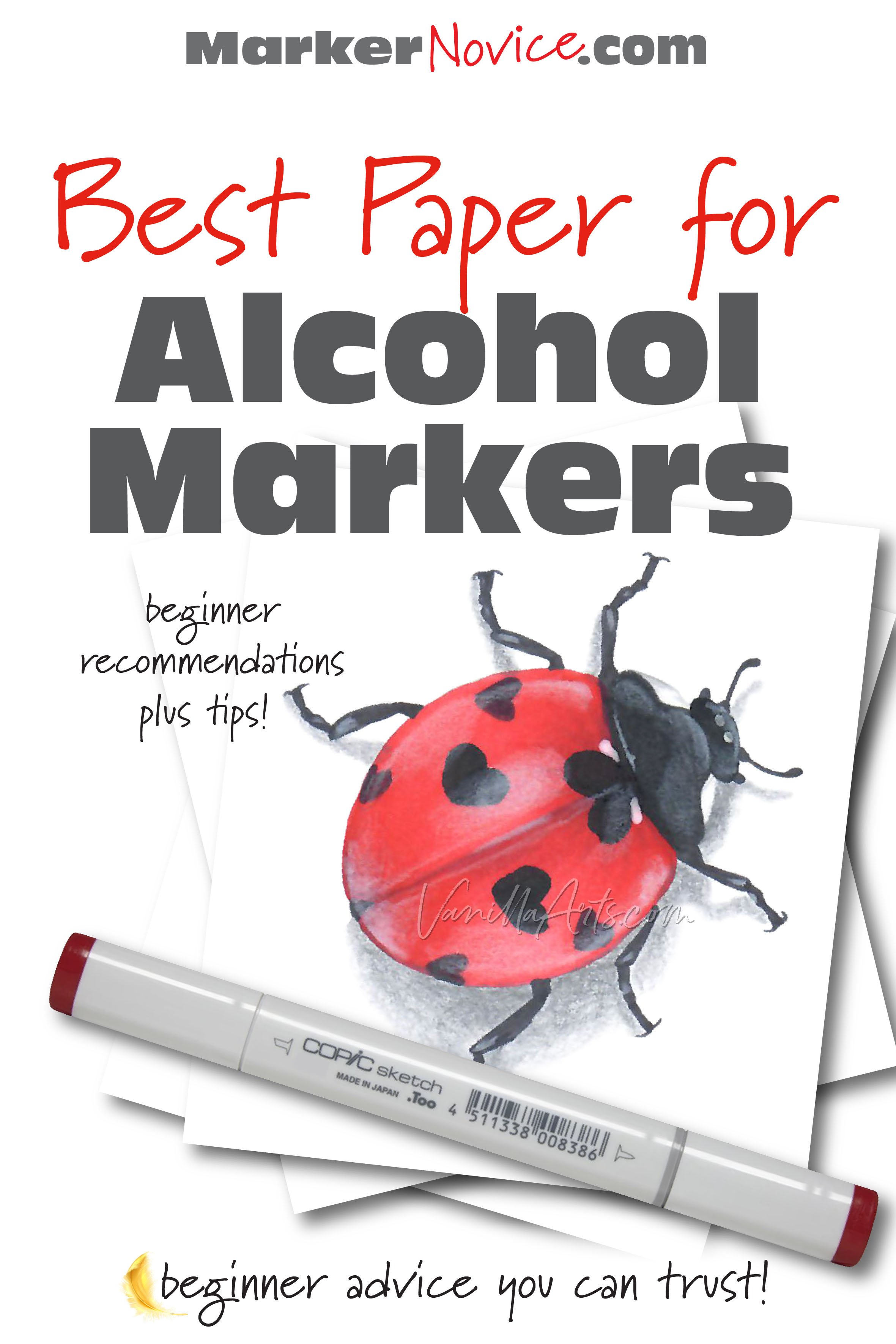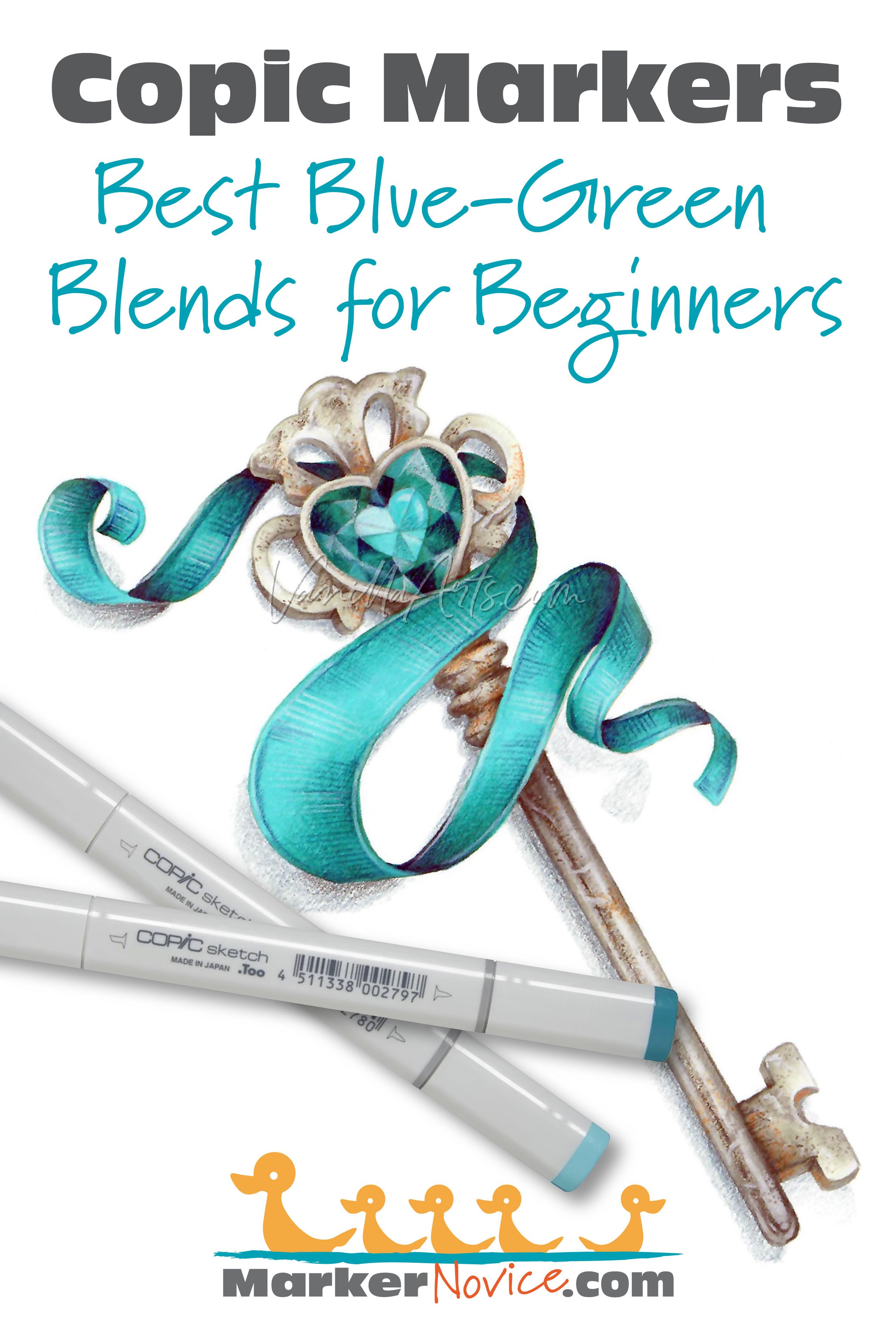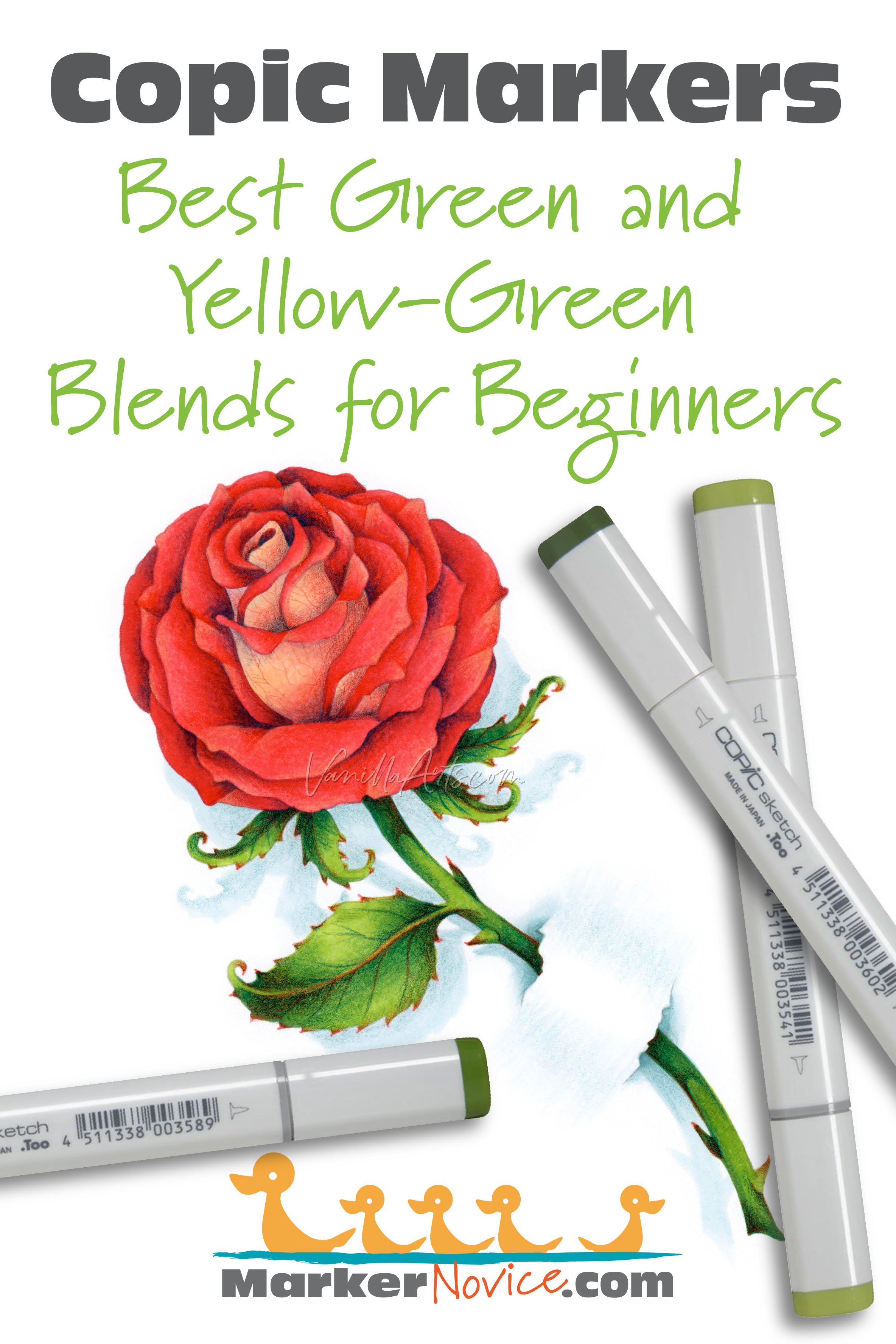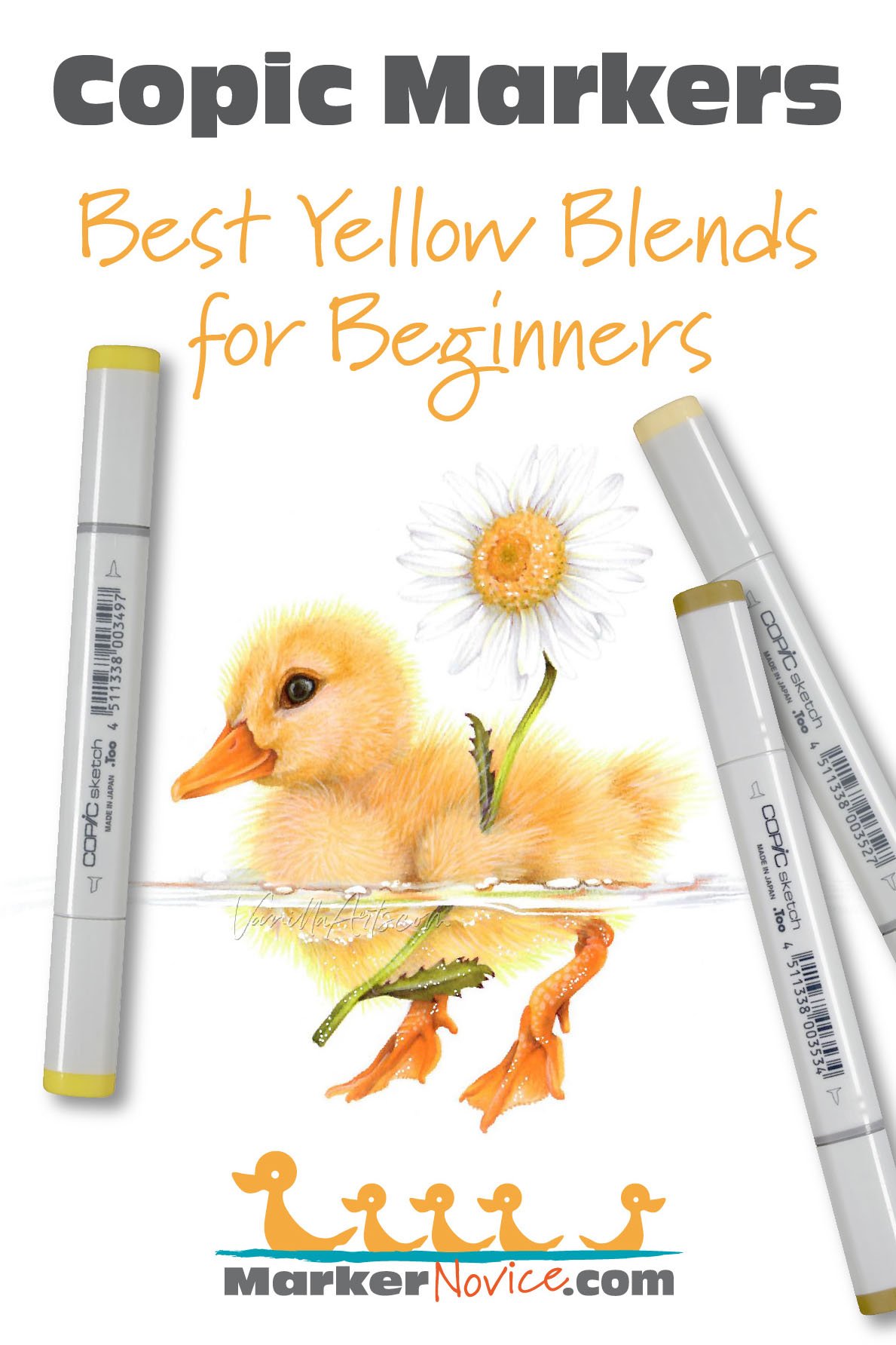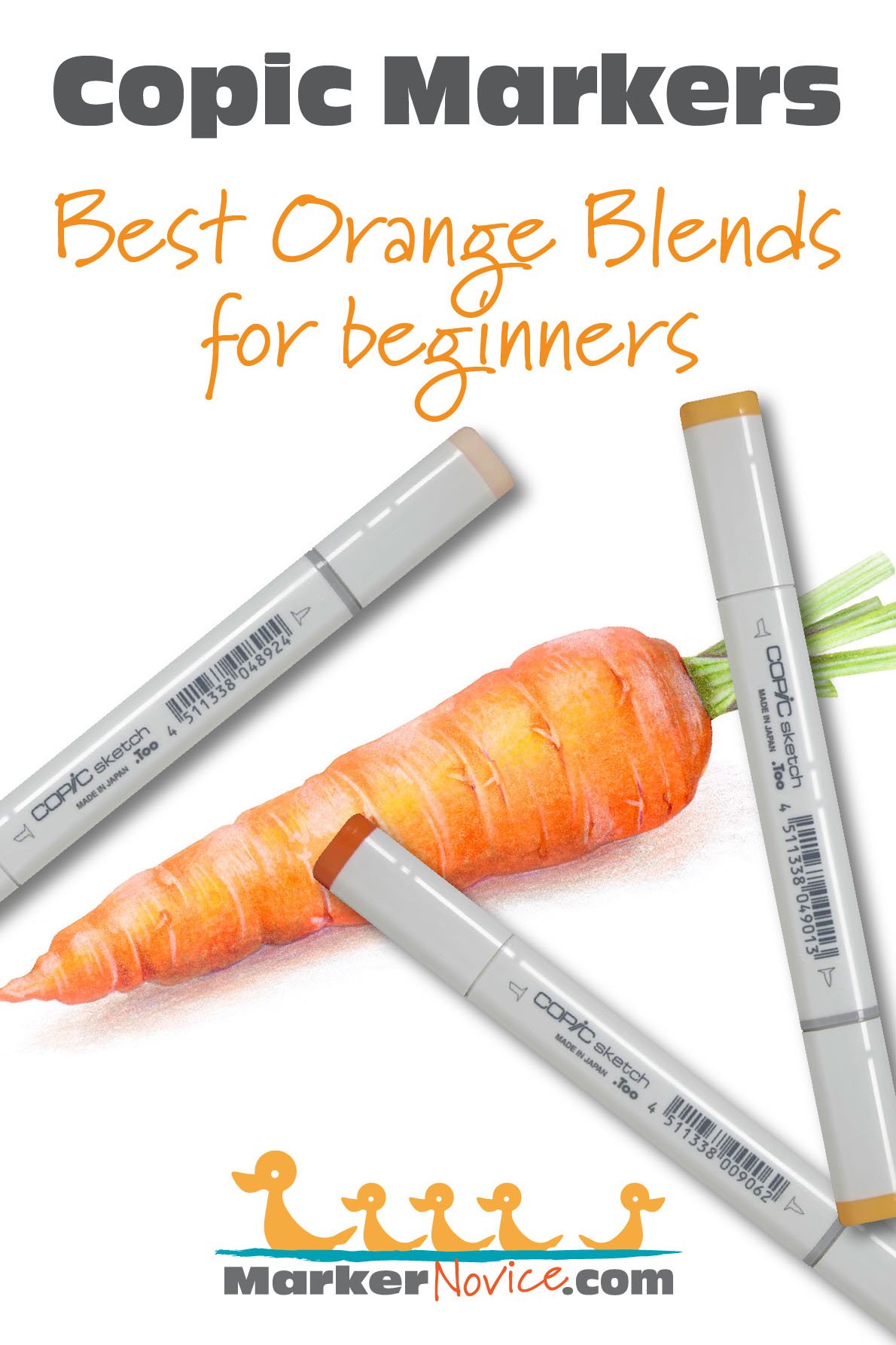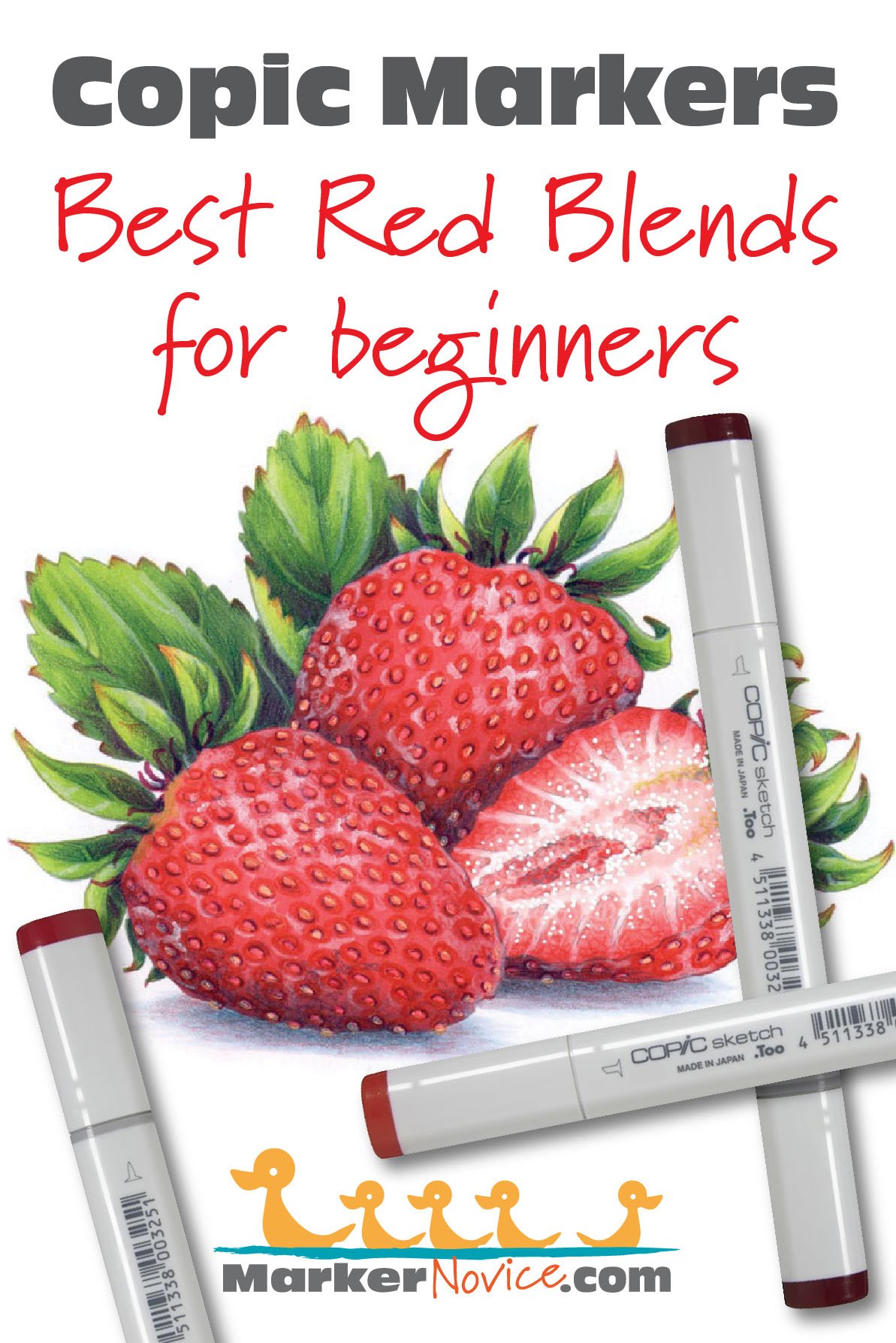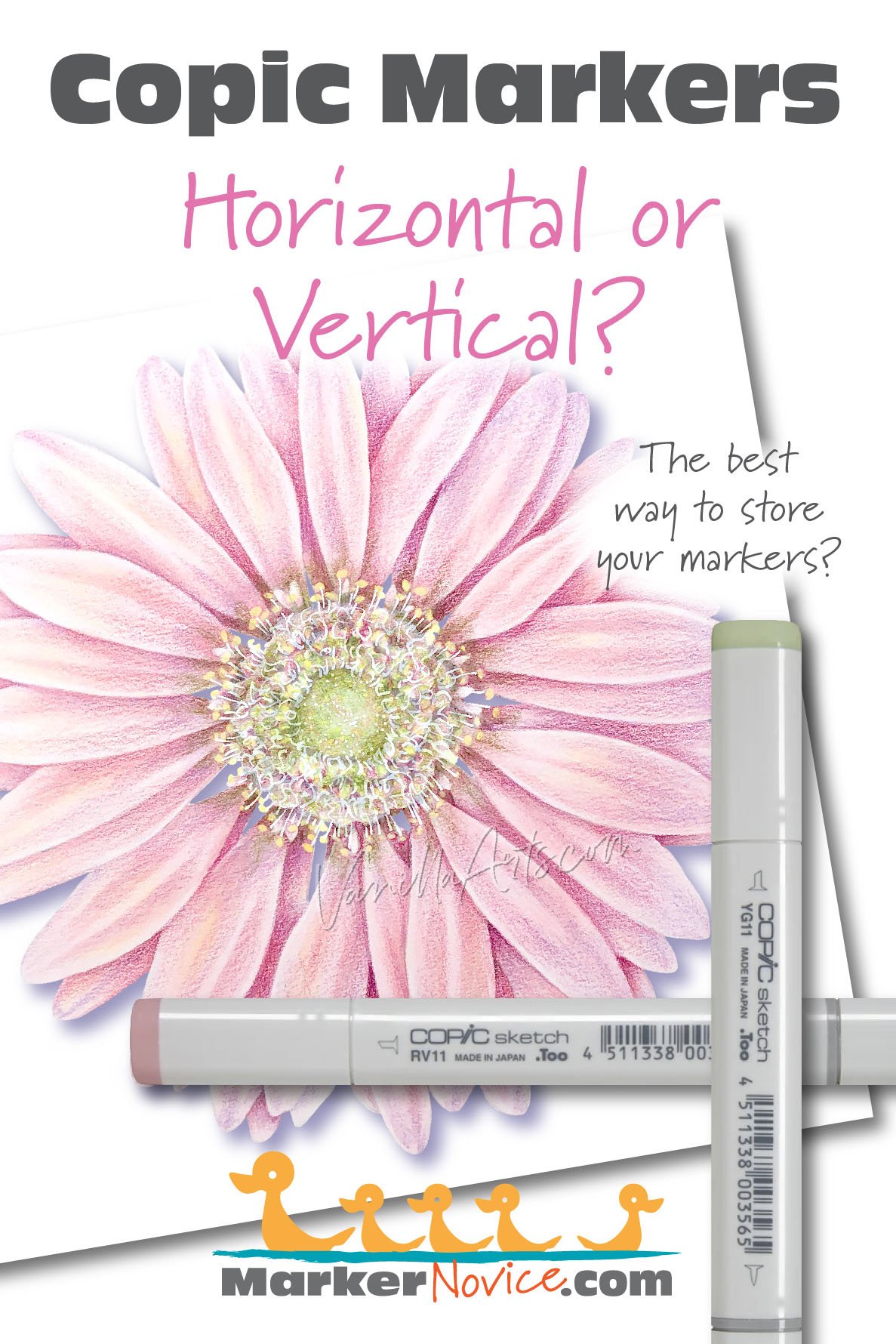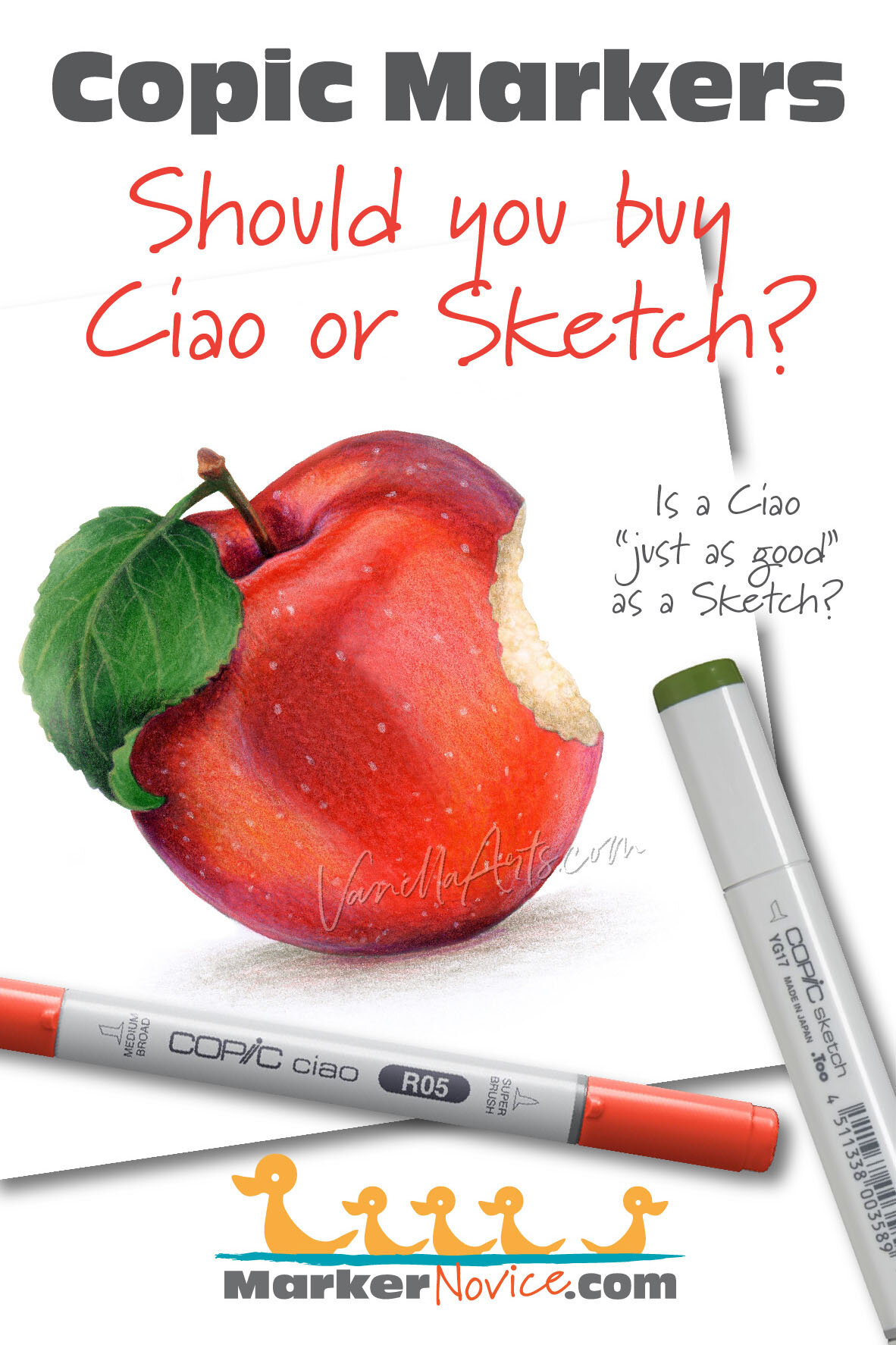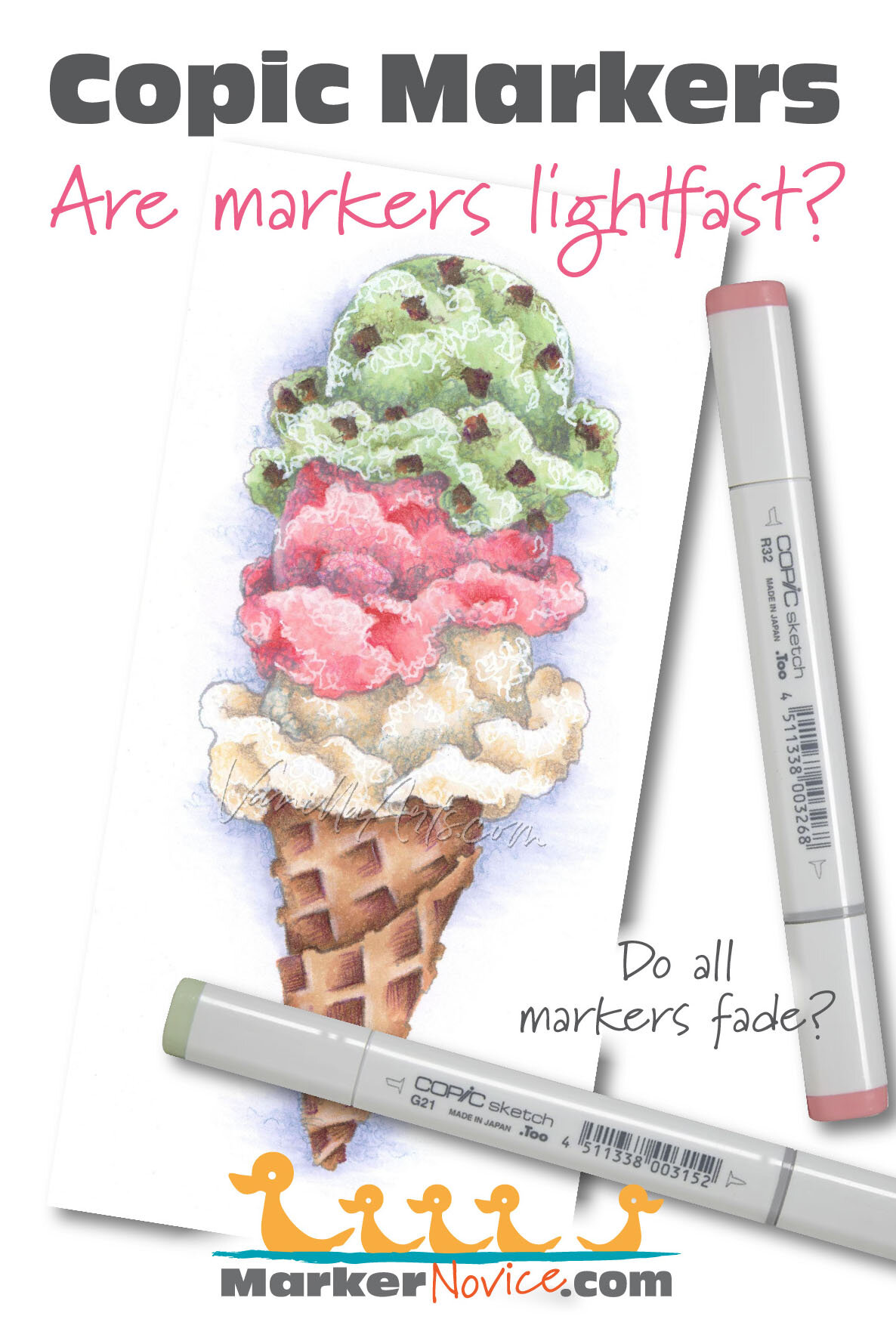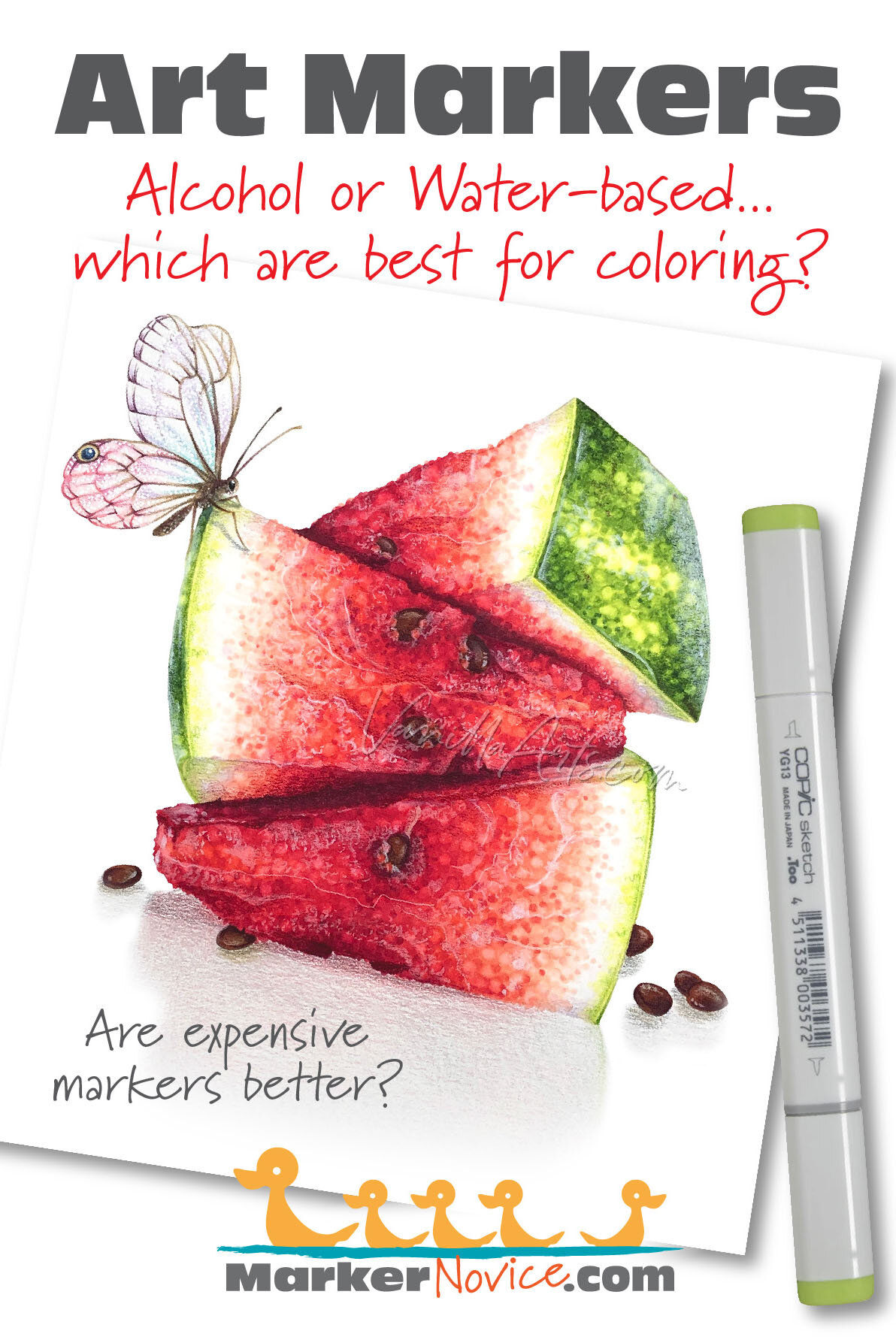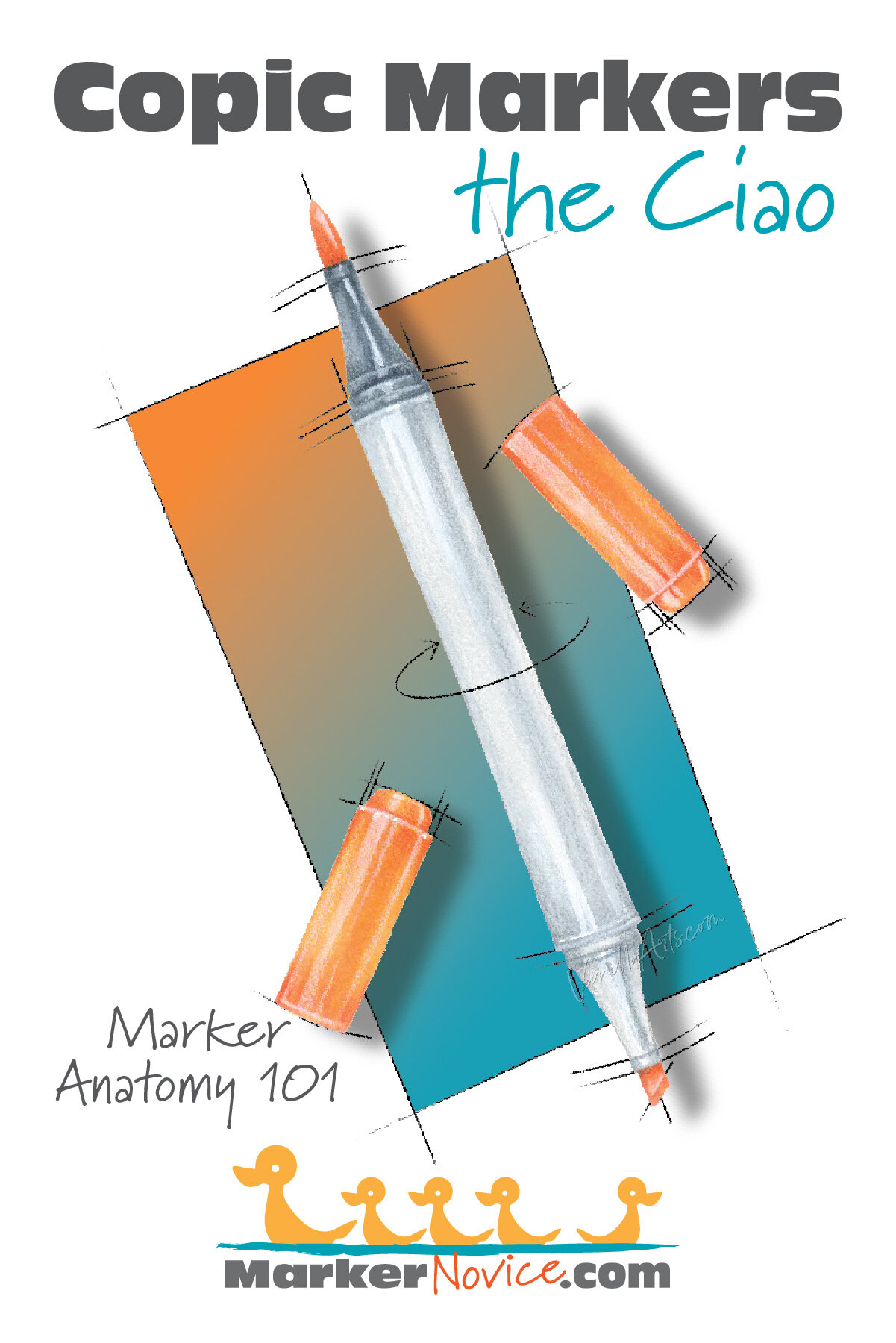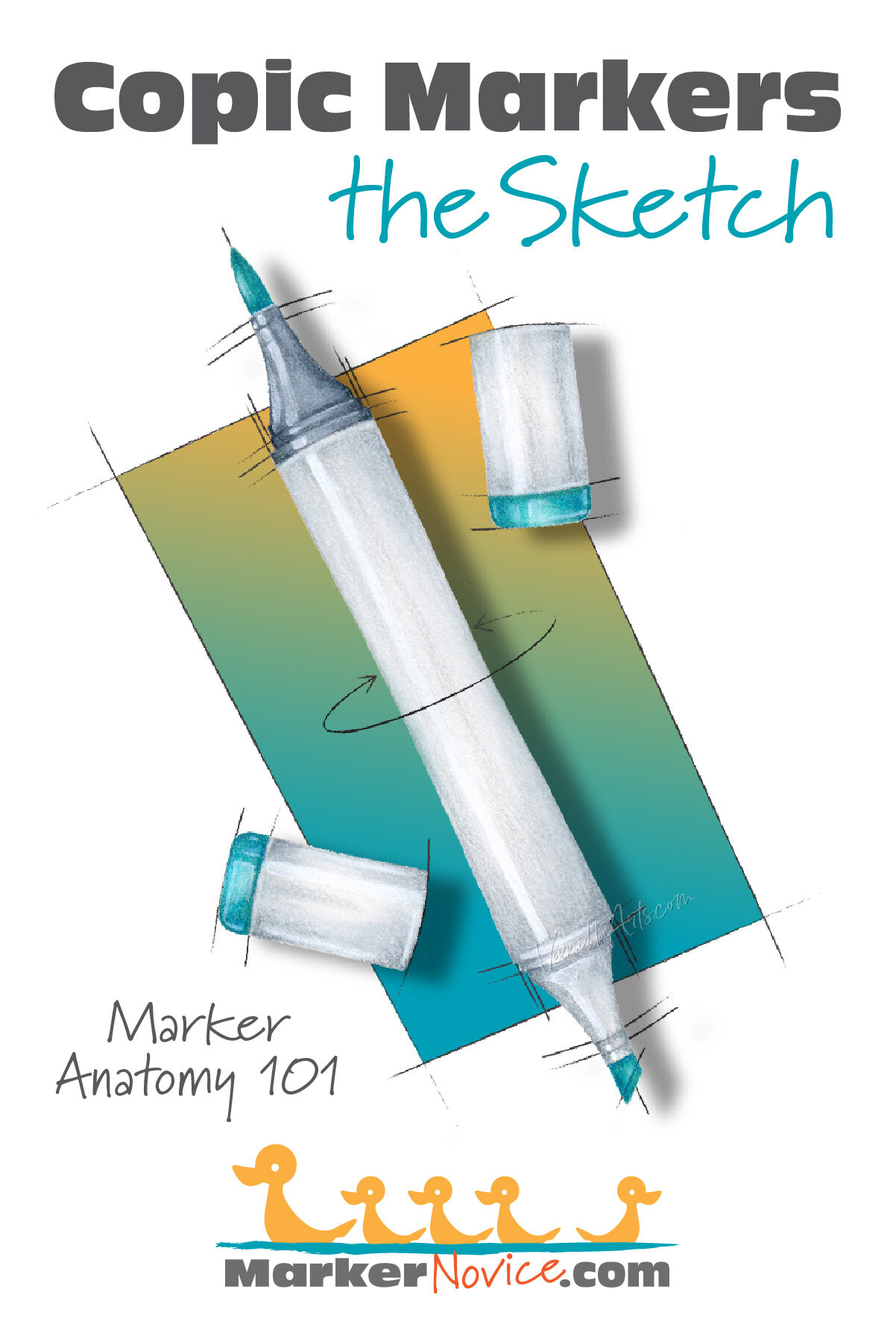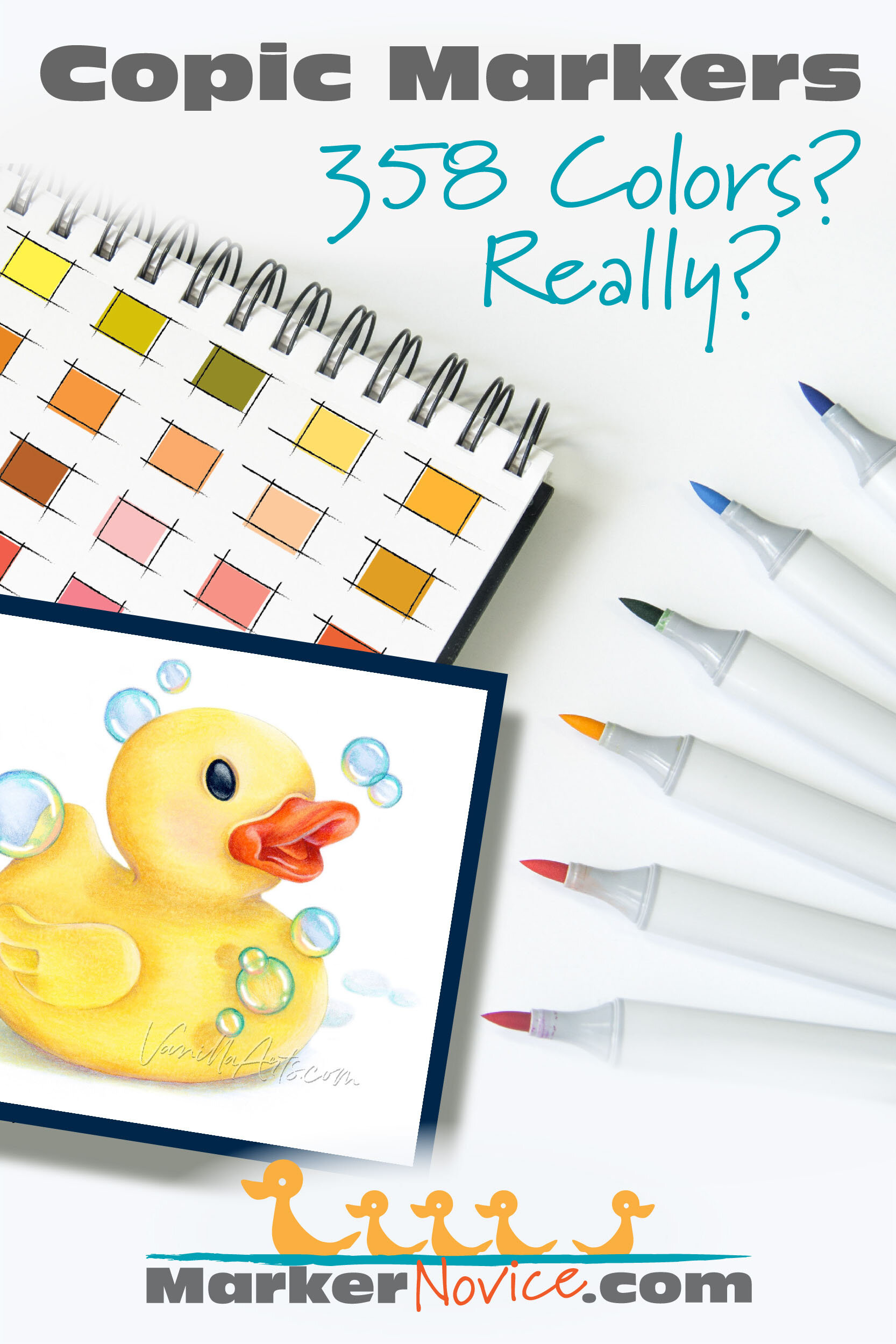What’s a Copic Sketch Marker?
Getting ready to purchase your first Copic Markers?
It’s easy to be overwhelmed by all the choices— Sketch, Ciao, Classic, Wide? What’s the difference? Should you go cheap? Which nib is best?
Relax.
We’re here to help you understand which marker is best for you!
What is a Copic Sketch Marker?
Copic Sketch Markers were designed for coloring. They are a juicy marker, making them ideal for blending and filling large areas with smooth color. The Sketch is Copic’s top selling style combining their exclusive Super Brush Nib, large ink reservoir, and a 358 color range.
Sketch Marker Overview
The Copic Sketch Marker was introduced in 1993. The Sketch is Too’s top selling marker style. They’re so ubiquitous that most people wrongly assume Sketches are the original Copic. The first Copics are actually what we now call a Classic but the Sketch with it’s improved design easily outsells the Classic.
Sketches have an ergonomic flattened-oval shaped barrel which tucks nicely into your hand. It’s a slightly oversized tool which offers comfort to those with hand arthritis, carpal tunnel syndrome, tight grips, or those who color for extended periods of time.
The flattened sides keep the Sketch from rolling off your desk.
Copic Sketches are dual ended and come standard with a Super Brush Nib and a Medium Broad (chisel) Nib. A gray band indicates the brush nib end.
Sketch is the ONLY style of Copic available in ALL 358 colors.
To date, when Copic has introduced new ink colors, they’ve only offered them in the Sketch style.
If you’re someone who intends to collect every color and you will update your collection with future new releases, the Copic Sketch is your safest bet.
Sketches are refillable (further details below). The Sketch has a large ink receptacle. It holds less ink than a Classic but significantly more than a Ciao.
FUN FACT? I purchased my first Copic Markers in 1992. Yes, I’m old.
Who are Sketch Markers For?
Classic Copics (the original style) were primarily used by designers and comic, commercial, or storyboard artists. They’re an excellent drawing tool because they provide a consistent line with no bleed.
But as marker user shifted from drawing to coloring, improvements to the Classic were needed.
Sketches were developed for artists who want a juicier, more expressive stroke.
The Super Brush Nib makes all the difference.
Super Brush Nibs excel at flooding spaces with generous swaths of color. This is especially important for smooth blending where moisture is the key to best results.
Super Brush Nibs are also good for filling large areas. I frequently color images as large as 18x24” with Copic Sketch Markers.
Lettering artists and modern style calligraphers also tend to favor the Super Brush Nib. It’s a springy, reactive nib which gives an expressive multi-weight line depending upon the amount of pressure used.
Copic Sketch Markers are ill-suited for drawing, detail work, and small coloring projects.
Sketch are often overkill for card-makers using stamp images less than 3” in size.
WE ASKED! 80% of Vanilla Arts students prefer the Sketch over other Copic styles.
Copic Sketch Caps
Sketch caps match the pale gray color of the marker body.
The ends of Sketch caps feature plastic color indicators which are intended to match the ink color. A few cap colors are not exact matches but they’re close. A few color ends are translucent plastic but most are opaque; there’s no obvious reason for the translucent plastic.
Sketch colored cap ends are laser etched with the color number and name. (More on this in the next section.)
Sketch caps are interchangeable from end to end. No need to keep them straight, they’re identical.
Sketch caps feature a very secure click lock which serves as a hepatic indication that you’ve closed the marker securely. I’ve occasionally heard of Sketches drying out with the cap on but it’s so rare that I have my doubts. I’ve never personally had it happen.
I recommend that you twist the caps to remove rather than pull straight off, to prevent ink splatter.
Overall, I think Sketch caps are the best designed of all the Copic styles and they far surpass other brand caps in seal and security. The only downside to Sketch caps is that they do not nest, meaning you can’t store a Sketch cap on the opposite end while coloring. It’s a minor (but irritating) flaw.
HORIZONTAL OR VERTICAL? What’s the best way to store your Copics? Honestly? It doesn’t matter.
Copics are not gravity-fed and the ink has no sedimentary particles. This means you can store them however you’d like.
Sketch Numbering + Identification
All Copics use the same numbering system and the same refill inks.
The Copic number is laser etched in dark gray on the body of a Sketch Marker along with brand details. The color name is not listed on the barrel, only the number. Symbols indicate the brush and chisel ends.
The etched lettering does not wear off. A few of my markers are over 25 years old and they still look new.
The Copic number AND the color name are laser etched on the end of both caps.
Black etching on pale colors and white etching on dark colors.
Because the numbers are etched on the end of the cap, it’s easy to select Sketch markers from upright storage. This is a definite advantage over the Ciao and Wide marker styles which have no end-cap markings.
A thin, darker gray band indicates the brush nib end. The band is on the marker body, not the cap.
Sketch Nib Options
Copic makes a variety of replacement nibs for all of their markers. Nibs do wear out and can get damaged but they’re easily replaceable.
WARNING: Dried, crusted, or hardened nibs can be replaced BUT the nib is not the only part damaged when a marker runs dry. The core inside the marker is made of a similar material and often hardens along with the nib. A nib can be replaced but you can not replace a core. A damaged core requires full marker replacement.
Serious Copic users often install alternative nibs to upgrade their marker for specific tasks.
Sketch Standard Nib 1: Super Brush Nib. (Do not confuse the Super Brush with the Copic Round Brush Nib which fits Classic Markers only.)
The Super Brush Nib is an extremely juicy and springy nib which responds to changes in hand pressure. S.B. nibs excel at blending and filling larger areas because they deliver more ink to the paper than any other Copic nib.
The S.B. nib rests in the dark gray end of the marker.
WARNING: When refilling a Copic Sketch, I recommend you do not refill from the brush end (more details in the refill section below).
Sketch Standard Nib 2: Medium Broad Nib (chisel)
Copic users almost always refer to this as the “chisel nib” and many colorers ignore this nib entirely.
Chisel nibs are an old-school drawing nib capable of 3 different line weights. Chisel nibs are not generous with their ink flow and thus are not suitable for blending. Chisels are very firm and need to be broken in (softened a bit) before they give an even line with no skips or flow breaks.
The Chisel nib rests in the pale gray end of the marker.
I recommend refilling from the chisel end for ease and safety (more details in the section below).
Sketch Replacement Nib Option: Sketch Fine Point (bullet)
Ideal for lettering and detail coloring, the Sketch Fine Point is a firm bullet nib which provides maximum control, even ink flow, a fine line, and is perfect for small-ish details. This nib is designed to replace the Chisel nib and fits on the light gray end of the Sketch marker.
I recommend that card-makers and small stamp colorers switch to the fine nib on their most used colors (replacing all your chisel nibs can be costly). The fine nib is designed to replace the Chisel nib and fits on the light gray end of the Sketch marker.
WARNING: Copic makes more than a dozen different replacement nibs. The three listed here are the ONLY nibs which fit in Copic Sketch Markers.
BEST BUY? Consider purchasing a used Copic collection. Properly maintained Copics look and work like new!
Refill a Sketch Marker
All styles of Copic use the same numbering system and the same refill inks. See the full Sketch color palette at Copic’s official website here.
A factory-weight Copic Sketch Marker should measure between 14.5 and 14.8 grams (with both caps on). See the end of this section for an update on factory weight info.
I do not recommend filling to factory weight as completely full markers are more prone to Copic Volcanoes (see my article at VanillaArts.com about volcanoes.)
Like all Copic markers, performance decreases and blending becomes more difficult as the marker empties. Noticeable blending changes begin at about 13.5 grams and you will encounter blending impairment at weights lower than 13.2 grams. This can be as few as 2-3 uses for your most-used colors!
It is a myth that Copics can go for years without refilling. The first thing I check when a student can’t blend well is their marker weight. I’ve seen markers as low as 11 grams! Read my article about common Copic Myths here and read details about Blending Issues at our sister site, VanillaArts.com.
Overfilling leads to marker leakage.
For accuracy, I recommend refilling by weight rather than the drip method. I find most drop recommendations to be wildly wrong. “10 to 12 drops” doesn’t tell you the size of the drop or how low the marker was to begin with. In my tests, 10 drops doesn’t come close to restoring an ideal weight.
See my refilling recommendations at VanillaArts.com which includes a link to a great weight refilling tutorial by Michelle Houghton from Copic in the Craft Room.
WARNING: To refill efficiently, you should remove one nib from your Sketch marker. I do not recommend removing the Super Brush Nib as this can easily damage the brush nib. Copic Tweezers are meant to reduce brush nib damage but it’s much safer and far easier to refill from the chisel end.
__________
* UPDATE (December 2022): I’ve been hearing from readers/students that brand new Copic Sketch are now weighing closer to 14g. I reached out to Elena at Violeta-Ink.com and she confirms that the average weight of her fresh stock is more like 14.2g rather than the 14.6 average that I observed back in 2018. Has Copic has reduced the starter weight as a cost savings measure? We’ll keep watching to see!
CHECK FIRST! Beginners often mistakenly purchase Classics because they look similar to Sketch online. AVOID CLASSICS IF YOU WANT TO BLEND!
Personal Thoughts:
My first Copics were Classics because Sketch had not been invented yet. I used them for drawing and hand-lettering. In 1994, I sold my 46 Classics and gradually replaced them with Sketches. It took me a decade to complete my current collection. I do not own the T or F families and will likely never buy them.
I use Sketch exclusively and I recommend them to all my artistic coloring students.
The Super Brush Nib requires some bravery and training but it’s relatively easy to master and produces beautiful effects.
Sketch are the most expensive style and many people try to save money with Ciao. Ciao have drawbacks though— the caps do not have color numbers, the caps have a design flaw which can damage your nib, Ciao must be refilled frequently, and they seem to be more prone to leakage and volcanoes.
Additionally Ciao is only available in 180 of the 358 total colors. Many of my favorite colors are Sketch only. Buying Ciao means that by necessity, you will have a mixed collection which frankly, is hard to store and display.
I recommend Sketch over Ciao because of the larger Sketch color range and I really dislike the Ciao caps.
I recommend Sketch over Classics because of the Super Brush Nib.
I think Sketch are the best value Copic over a lifetime of use.
Amy Shulke is a professional technical illustrator who has used Copic Markers at school, work, and home since 1990. She teaches artistic coloring classes online at VanillaArts.com and locally in south-eastern Michigan.
Marker Novice is Amy’s completely free resource devoted to beginner marker education. For intermediate/advanced artistic coloring articles, see her Studio Journal here.
Click to receive Marker Novice & Vanilla updates in your Pinterest feed



